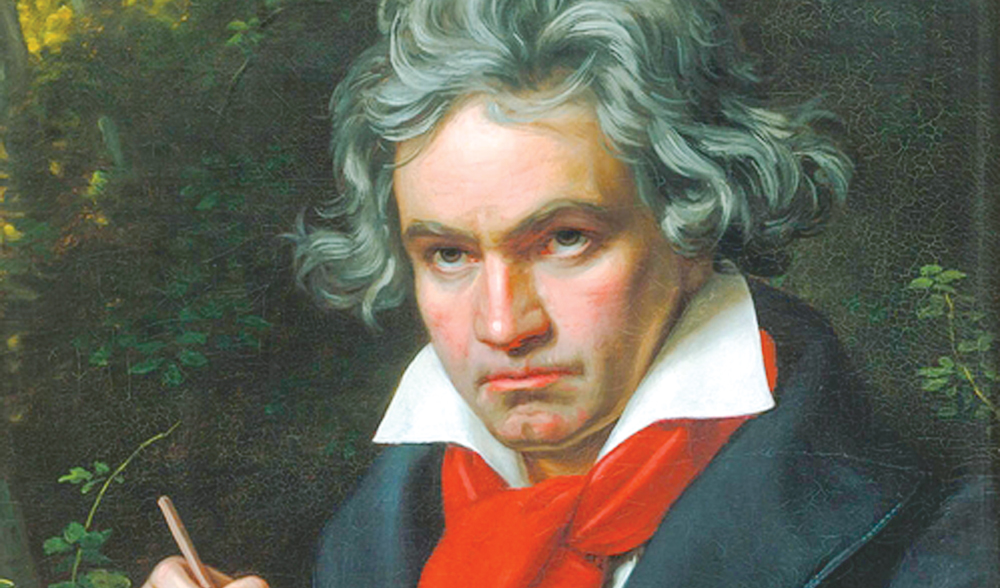Daisaku Ikeda was in his late teens when World War II ended. Amid the chaos and uncertainty of postwar Japan, he at times found solace in music.
“Listening to the masterworks of Beethoven … was a source of incredible encouragement,” he says. “It infused me with the strength I needed to get through those extremely trying times.”[1]
He began his Buddhist practice at age 19 and soon was striving alongside his mentor, second Soka Gakkai President Josei Toda, resolved to transform society through spreading Nichiren Buddhism.
Later, as third Soka Gakkai president, Ikeda Sensei worked to share with many others the inspiration he derived from art and culture. He founded the Min-On Concert Association in 1963 and the Tokyo Fuji Art Museum in 1983. His initiatives to integrate culture into our Buddhist movement express the respect and appreciation for humanity’s cultural heritage inherent in Nichiren Buddhist philosophy.
During his first visit to the United States in 1960, Sensei encouraged a woman who was worried about sending her son to a Christian school:
Many aspects of our culture and how we live are connected in one way or another to religion. For instance, most companies are closed on Sundays. This is a practice that comes from Christianity, which views Sunday as a day of rest and worship. Yet, anyone who thinks that taking Sundays off is a slander of Buddhism would be unable to live harmoniously in our society.
Music and art, as well, are often influenced by religion. Yet, there is a difference between appreciating a work of art and believing in the religion that inspired it. Therefore, there is no need to think that you must avoid viewing such artwork or that listening to certain pieces of music constitutes slander. If having faith meant that you could no longer admire fine works of art, then that faith would be denying your humanity.[2]
Creating a Harmonious, Respectful Environment
Nichiren Daishonin refers to the “precept for adapting to local customs,” stating:
When we scrutinize the sutras and treatises with care, we find that there is a teaching about a precept known as following the customs of the region that corresponds to this. The meaning of this precept is that, so long as no seriously offensive act is involved, then even if one were to depart to some slight degree from the teachings of Buddhism, it would be better to avoid going against the manners and customs of the country. This is a precept expounded by the Buddha. (“The Recitation of the ‘Expedient Means’ and ‘Life Span’ Chapters,” The Writings of Nichiren Daishonin, vol. 1, p. 72)
To create an environment that is harmonious and respectful of others, it’s vital to remain open and flexible.
Sensei explains: “As long as we do not violate the fundamental teachings of Nichiren Buddhism—upholding the Gohonzon of Nam-myoho-renge-kyo, the heart of the Lotus Sutra; exerting ourselves in faith, practice and study; and dedicating ourselves to realizing the mission of kosen-rufu—we should maintain a flexible attitude toward local customs and culture.”[3]
The Nichiren Shoshu Priesthood’s View of “Ode to Joy”
In violation of this teaching, the Nichiren Shoshu priesthood on numerous occasions has shown outright disdain for art and culture.
For example, on Dec. 13, 1990, the Soka Gakkai received from the priesthood various inquiries about Sensei’s Nov. 16, 1990, speech. They attacked Sensei for proposing choral performances of Beethoven’s “Ode to Joy,” asserting that singing this song “constitutes praise for the Christian God and violates the Daishonin’s sacred intent.”[4]
Mischaracterizing Sensei’s intent to celebrate through this song the universal nature of the joy that Buddhism inspires, the priests instead labeled it as sinful. They distorted the Daishonin’s teachings in order to malign the Soka Gakkai, repeatedly rejecting the Soka Gakkai’s requests to discuss the matter. Using this and other baseless accusations, the priesthood moved to excommunicate millions of SGI members on Nov. 28, 1991.
Sensei writes:
A religious leader who speaks about the principles of Nichiren Buddhism yet declares such humanistic pursuits as art and culture to be slandering the teachings is in fact a narrow-minded dogmatist who tramples upon the Daishonin’s very spirit. The actions of such a person only serve to distort Buddhism and block the way toward worldwide kosen-rufu.”[5]
In contrast to the closed-minded dogmatism of the priests, SGI members strive to develop mutual understanding, respect and friendship, while treasuring their local communities and cultures. This is why the Soka Gakkai continues to flourish around the world under the banner of promoting peace, culture and education.
References
- The Wisdom for Creating Happiness and Peace, part 3, p. 330. ↩︎
- The New Human Revolution, vol. 1, revised edition, p. 46. ↩︎
- The New Human Revolution, vol. 30, “Vow” chapter, https://www.sokaglobal.org/resources/study-materials/buddhist-study/the-new-human-revolution/vol-30-chapter-6-51-60.html <accessed on June 10, 2021>. ↩︎
- Ibid. ↩︎
- The New Human Revolution, vol. 1, revised edition, p. 47. ↩︎
You are reading {{ meterCount }} of {{ meterMax }} free premium articles

